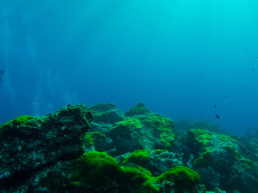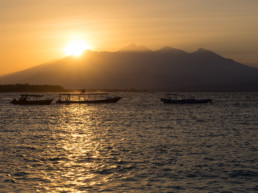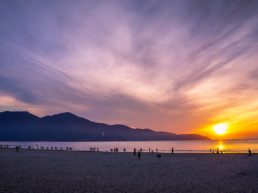Visiting the Maldives is a once in a lifetime experience high on the bucket list of many Western travellers, though one unattainable for most due to factors like distance and price. As part of a year of ‘funemployment’ and potentially questionable financial decisions, I recently went on a scuba dive liveaboard in the Maldives. Part and parcel of a trip to this remote island nation in the middle of the Indian Ocean is often a one-night layover in Malé or Hulhumalé. While some may lament these ‘busy’ islands, I see a layover in either as an eye-opening and positive experience. They present the opportunity to help jet lagged travellers ease into their upcoming island and ocean adventures, and meet locals. To be clear, all you need is a single night here; while unquestionability beautiful, they don’t hold a candle to the true gems of the outer atolls and resort islands.
Maldives Travel Guide for a Short Layover
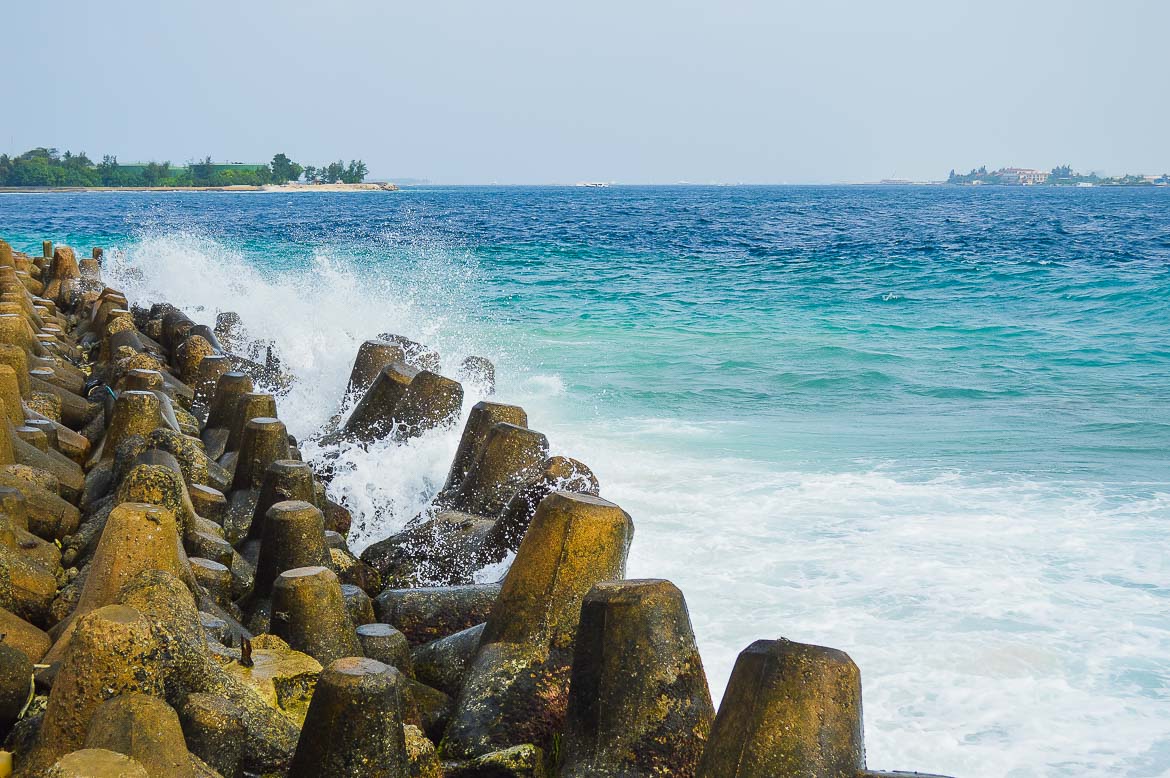
Arriving In Style
To “do the Maldives travel justice”, the ideal way to reach your ultimate island destination is via sea plane. Roundtrip flights to most areas on Trans Maldivian Airlines cost $250-450 USD per person, though luxury resort packages may already include such flights. As sea planes only operate in day light (fair enough), any international flight arriving after 5pm will likely require a one-night stopover.
Need another reason to consider a slightly extended layover? Many island resorts cost upwards of $500-2,000 USD per night. The notion of saving some major coin by arriving at the start of a new day also makes financial sense.
Malé– For a Taste of ‘City Living’
With a population of over 125,000 on 2.5 square miles of land, the capital city of Malé may be congested, polluted and incredibly busy relative to the outer islands. However, compared to other bustling Southeast Asian cities, it’s still a lovely escape. You’ll actually fly into Velana International Airport (formerly Ibrahim Nasir International Airport) on Hulhumalé. The ‘China – Maldives Friendship Bridge’ is set to complete construction in 2018, providing a permanent route for cars between the islands. Until then, you’ll need to take the 10 min and $2 USD ferry ride from the airport over to Malé. Once you cross over, taxis are regularly available, though some negotiation is required. In many cases your hotel arranges airport pickup, who greet you at the arrivals gate and takes care of all details from there.
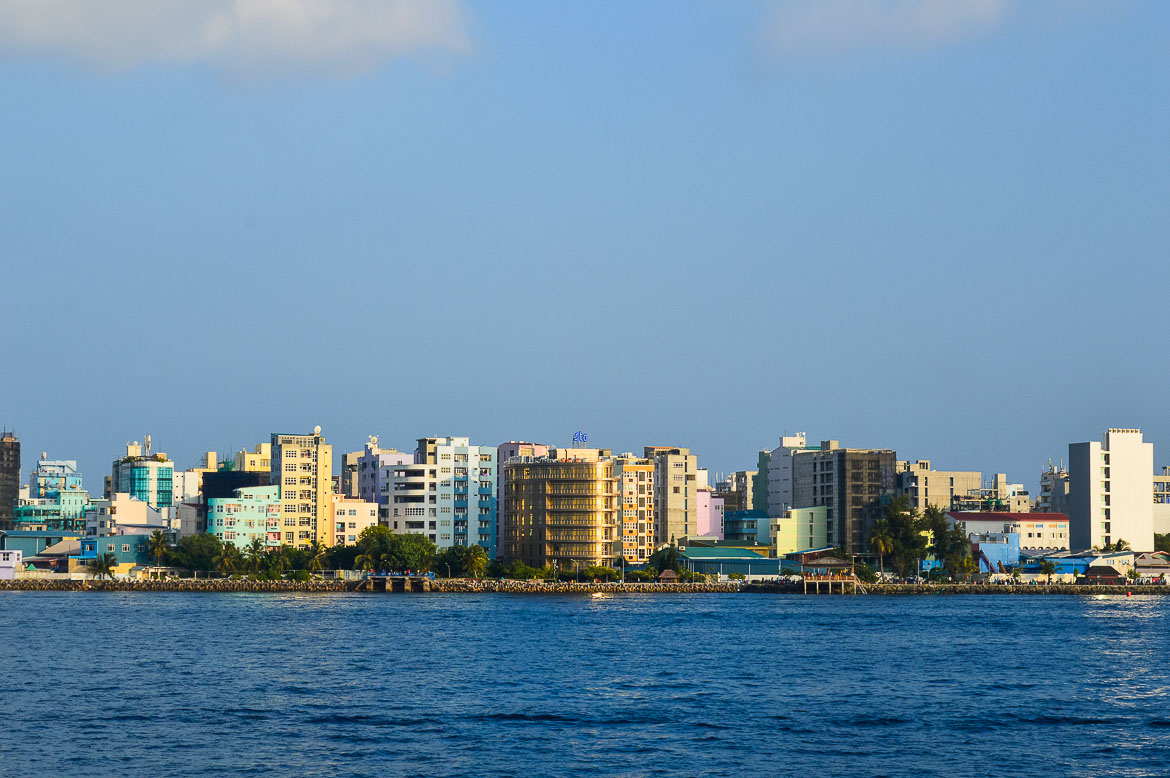
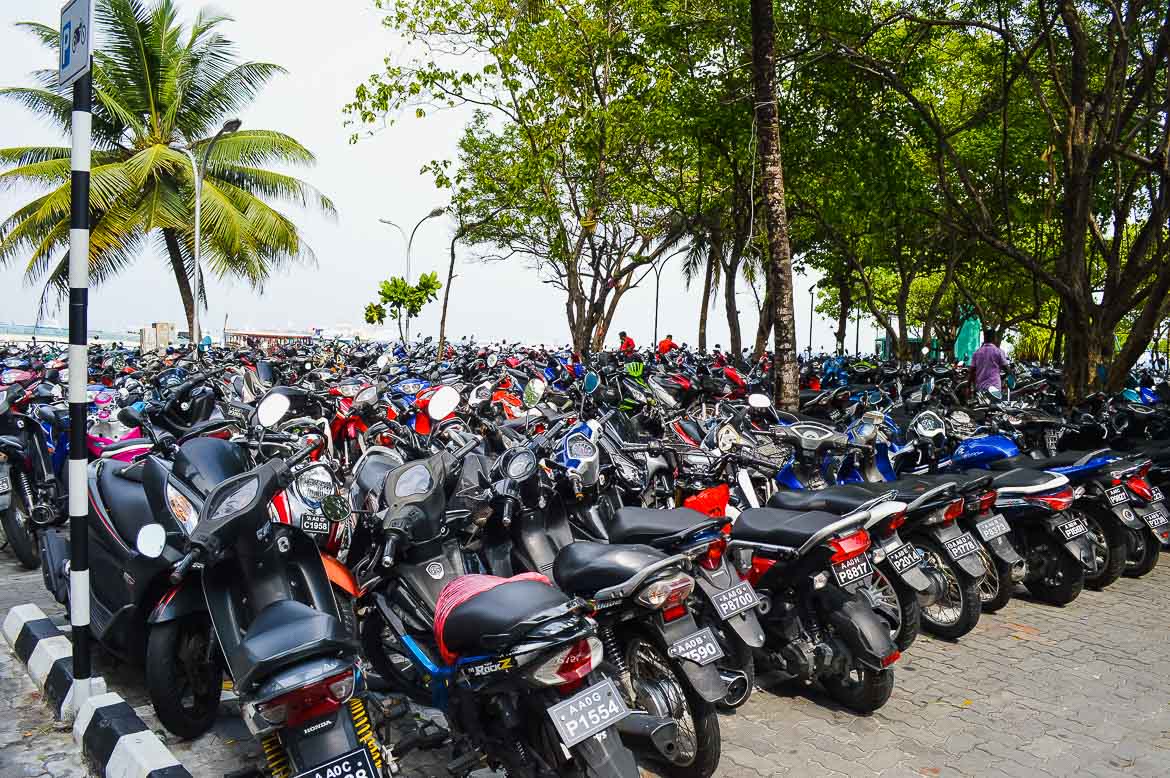
Accommodation ranges from $65-150 USD per night for basic three(ish) star properties with small rooms and adequate breakfasts. As the Maldives is a Muslim nation, you won’t find any bacon at breakfast, or pork of any kind anywhere, at any time. Alcohol on Malé, Hulhumalé and all the local islands is also banned. Don’t even try to bring a bottle of liquor with you from the Duty Free of your home country. Customs will most certainly confiscate it, trust me. You’ll need to wait until you’re on a resort island, cruise ship or dive liveaboard to purchase alcohol. For some, this is one of the reasons for keeping a layover on Malé brief.
Dominated by ferry jetties and industry around its shores, Malé offers one public, albeit artificial, beach close to the airport ferry terminal. Though nice, it’s utterly skippable versus what you’ll experience in the coming days. Best to spend a few hours walking the streets, taking in action at the Malé Fish Market, best experienced in the afternoon, or passing the landmark Grand Friday Mosque. Companies such as Secret Paradise offer well reviewed walking tours of the city for a true introduction to Maldivian culture and cuisine starting at just $30 USD per person.
It won’t take long for the midday heat to take its tole on new travellers. Seek reprieve from the sun in one of many local tea shops such as Royal Garden Cafe. Or enjoy a meal and impressive mocktail at Sea House Grill. For those who may have forgotten travel essentials such as sunblock or floaties, the grocery and souvenir stores on Malé are your most economical option before prices on the outer islands make your head spin.
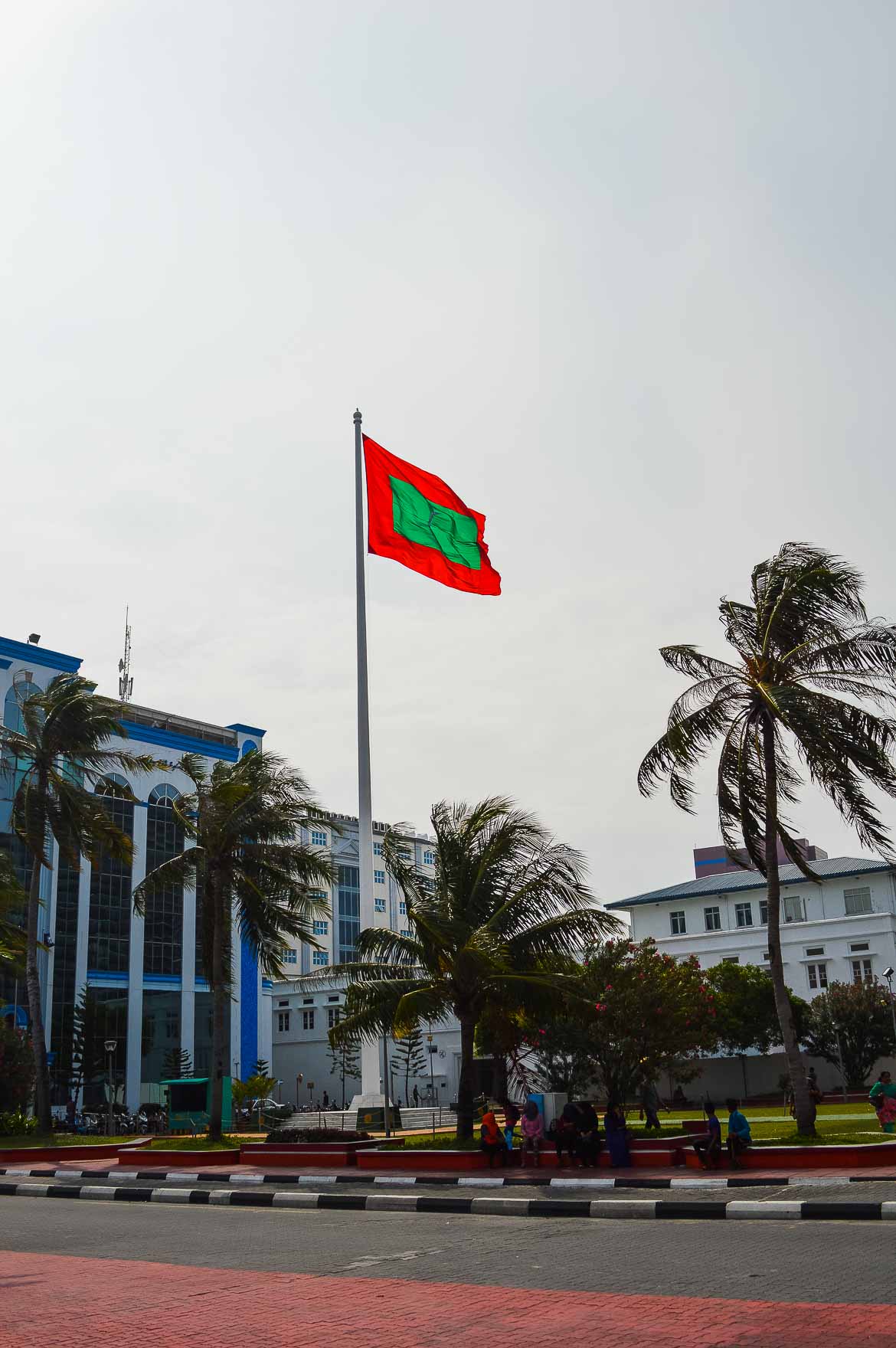

Hulhumalé – For a Taste of ‘Beaches’
By far, my recommendation is to spend your layover on Hulhumalé – the new manmade island development project of the Maldivian government. Built to alleviate the overcrowding on Malé, there are several phases of development happening on the island. Local housing, small beachfront hotels and government offices seemingly double each year. Phase 1 was completed in 2005 while Phase 3 will be done by 2020, accommodating a total of 60,000 citizens. Trees, wide roads, and proper sidewalks abound here versus Malé. Life on Hulhumalé runs at a much slower pace, but the buzz of construction is constant, and will be for several years to come.
The nearly two kilometre stretch of white sand beach along the Eastern side of the rectangular island boasts spectacular blue ocean views and swimming in calm reef protected waters. Watersports are on offer from countless vendors along the beach. A one-hour rental of a kayak typically costs $10 USD, stand up paddle boards a little more, while a jet ski will ring in at $65-80 USD.
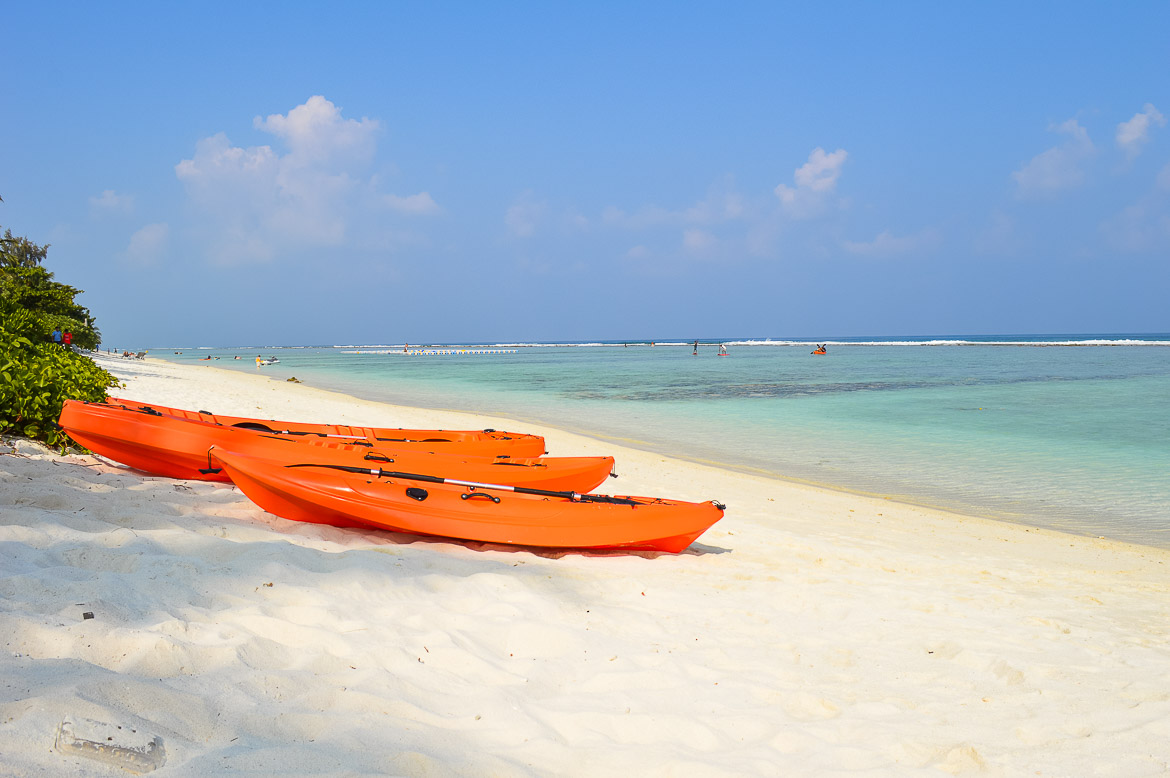
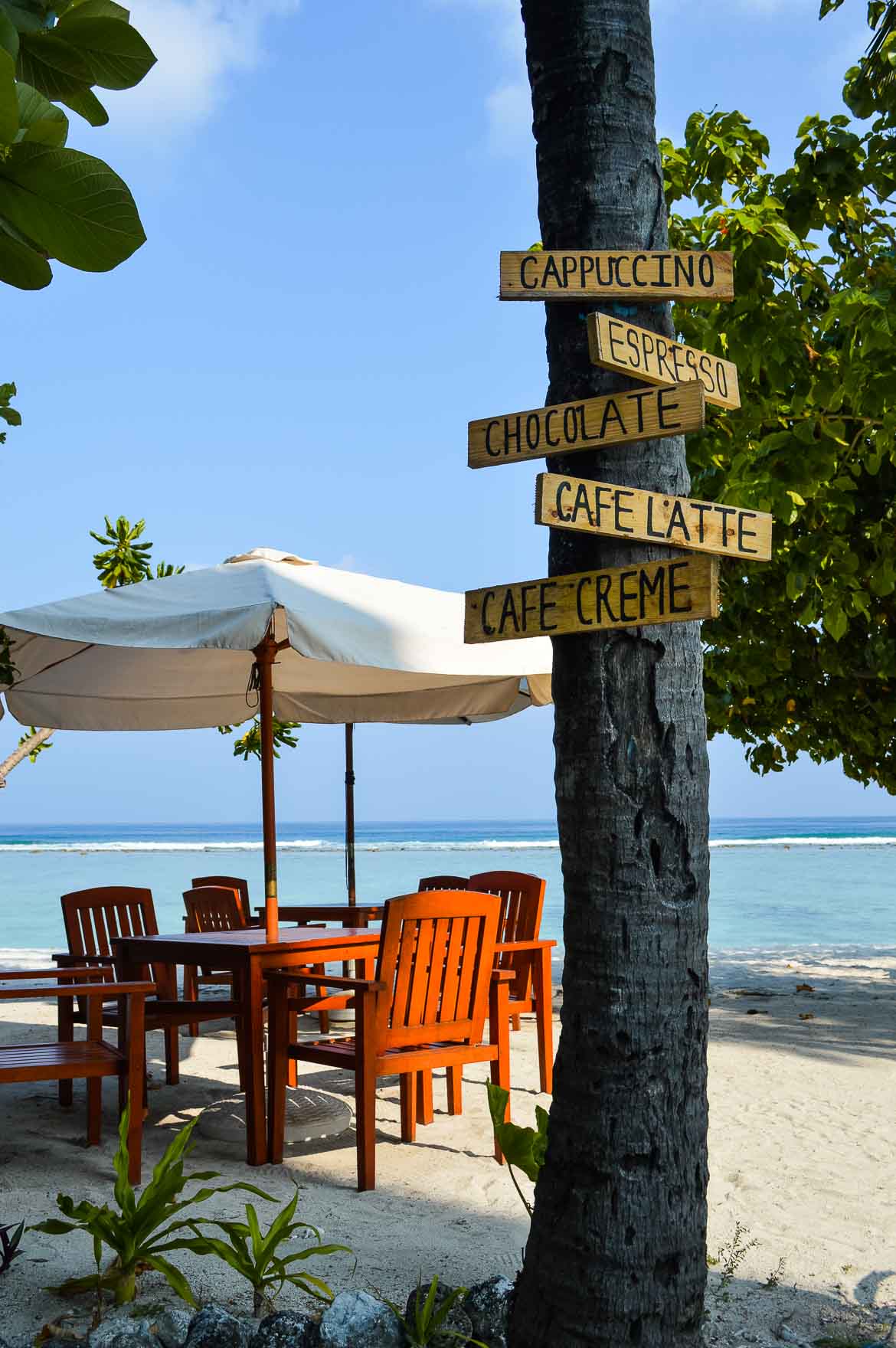
This ‘taste’ of the beach may be a challenge for some, due to the notable Maldivian law and Muslim cultural practice – no bikinis on public beaches. While many a European male can be found walking around in small, ill-fitting swimwear, ladies are to cover themselves in sarong dresses or tank tops and shorts at the very least. There is a designated ‘tourist beach‘ where bikinis are permitted and locals are not. The 500-meter strip is located along the southern tip of the east coast, from approximately the Lyre Hotel onward. All one has to do is look for the literal wooden wall protruding out to the waters edge – the marker for the start of the tourist beach. Full disclosure, with more rocks in the water and no nearby dining or lounger options in this area, the appeal is considerably diminished versus the public beaches. If walking hand in hand with your travel partner while donning your newest swimwear purchase is part of your vision of a perfect holiday, you’ve got yet another reason to keep your layover on Hulhumalé brief.
The West side of the island is home to a large commercial marina and the Hulhumalé ferry terminal. Nice for sunset views, but currently lacking dining options for travellers until more development is complete. In the meantime, the Southwest portion of the island presents an excellent tree lined running route – assuming you get up early enough or brave the midday heat. But remember, dress appropriately at all times.
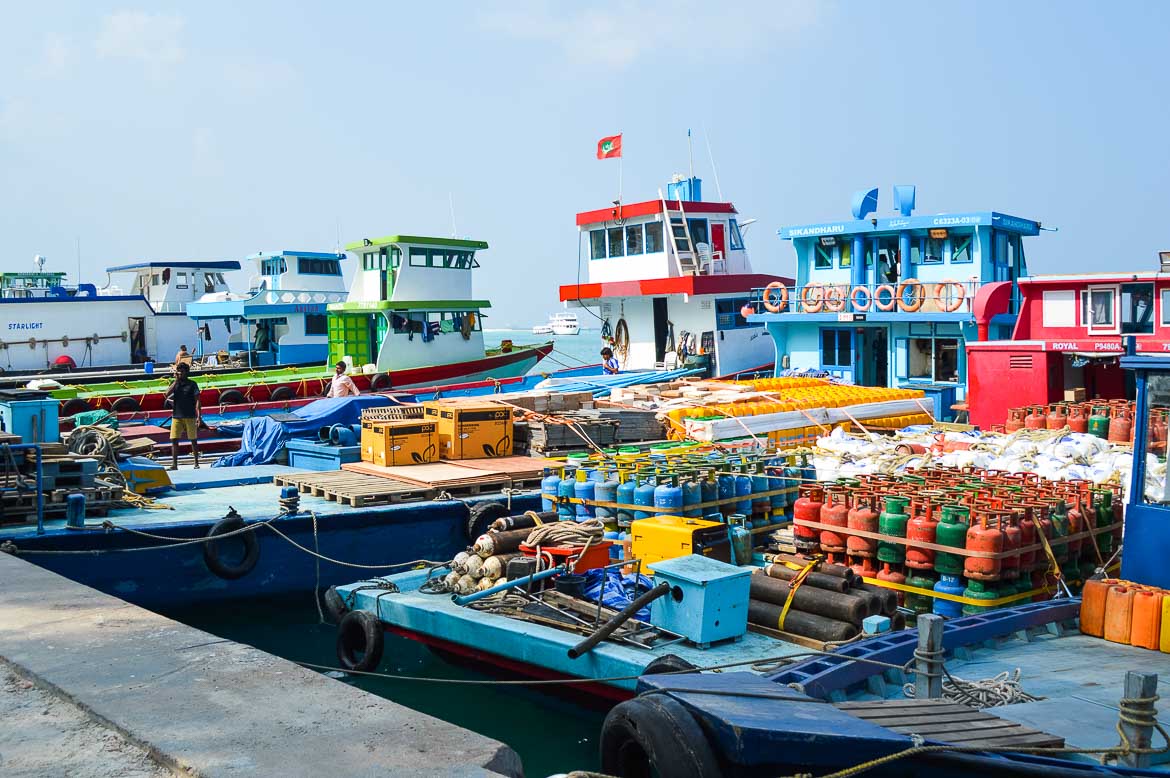
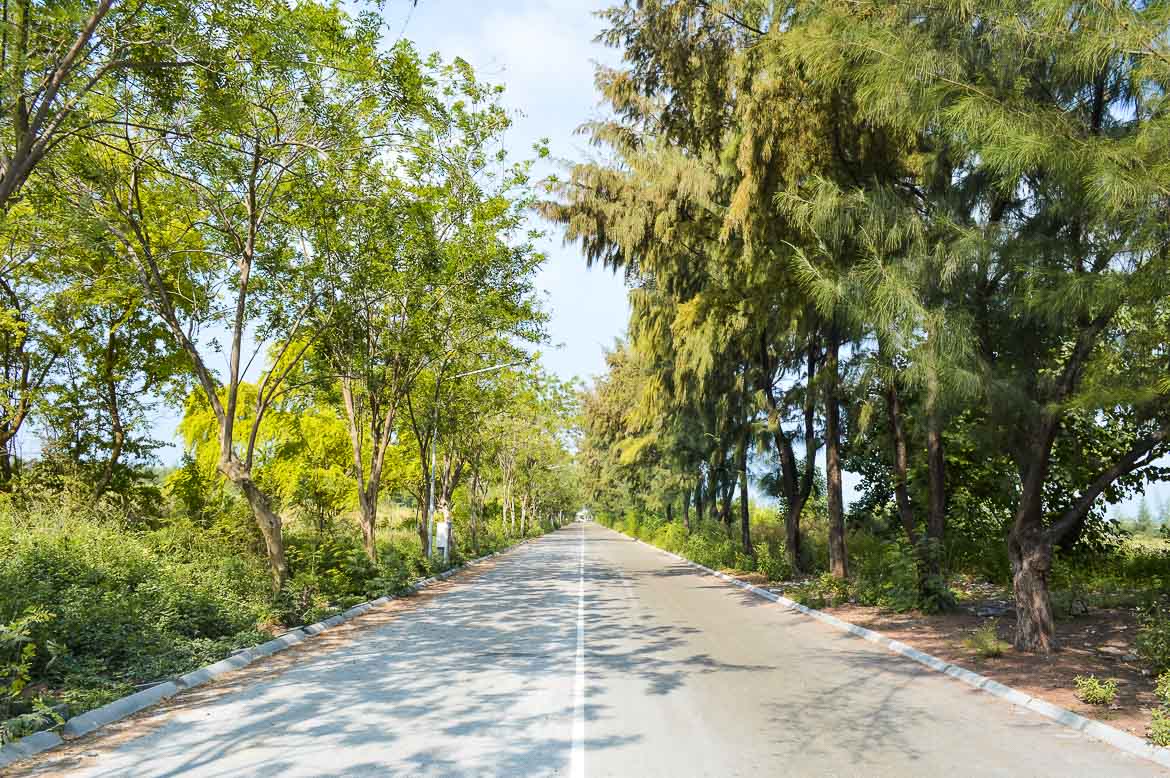
Accommodation choices are growing rapidly as development continues. Ocean view or beach front boutique properties are easy to find for $60-100 USD per night. Maakanaa Lodge, Fern Boquete Inn and Ocean Grand receive top marks. Larger 100+ room properties with pools such as the Radisson will be complete in 12-18 months.
Dining options are comparatively slim versus Malé, but there is a group of well-established favourites among locals and travellers alike. You’ll find a host of simple beachside cafes along the eastern beach. The Family Room Café (and its BBQ fast food offshoot SeaSide Grill) is #1 on TripAdvisor for good reason. What they may lack in speed, they more than make up for in charming service and delicious flavours. The Australian Beef Burger (95 MVR), steamed lobster or jumbo prawns (330 MVR), not to mention classic cheesecake (25 MVR) are amongst the best meals you can have in the Maldives, bar none. A bit further inland, Tandoori Flames offers excellent Indian curries. Conversely, the ocean views from the rooftop patio of O’ View at Hotel Ocean Grand are not to be missed.
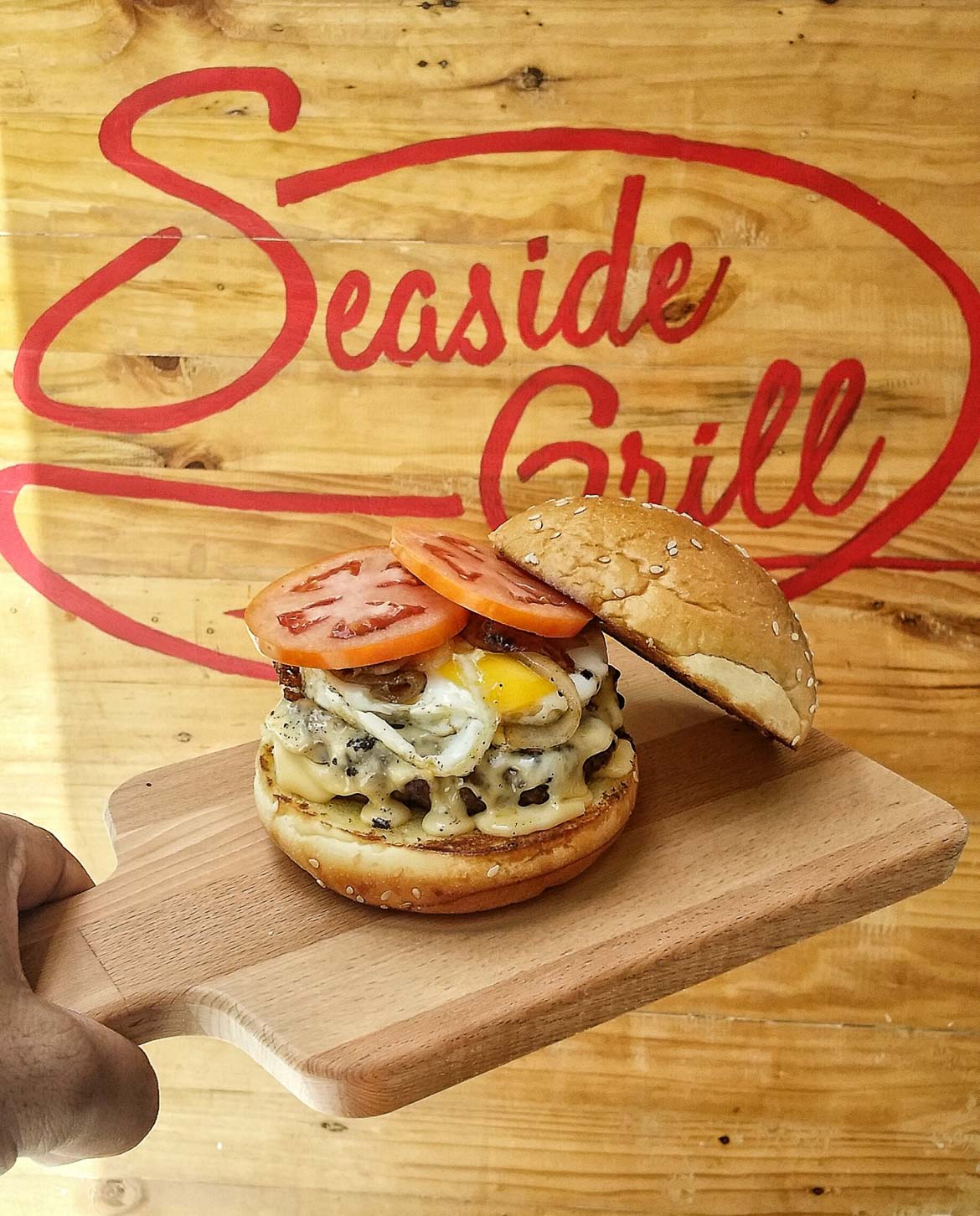
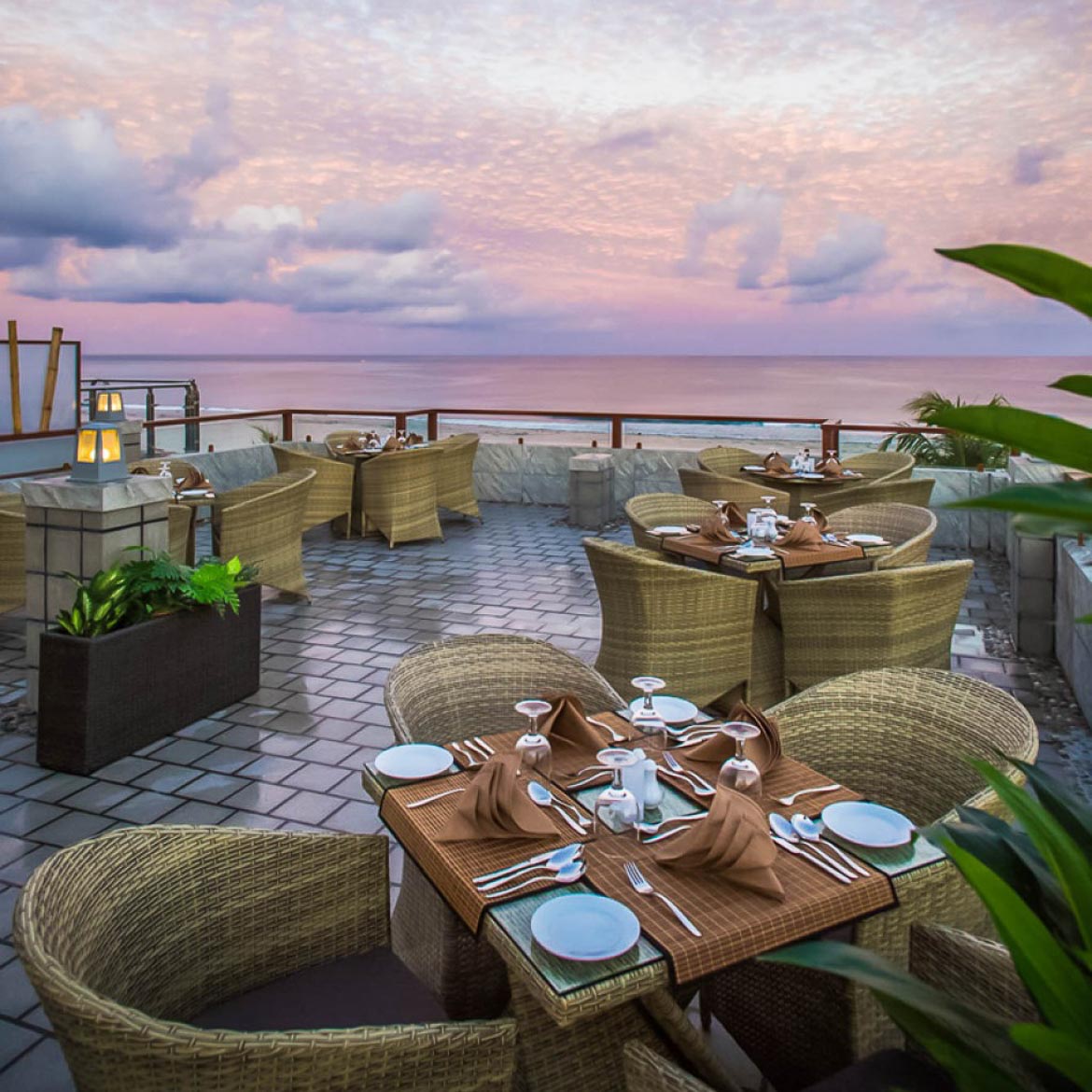
Maldives Travel Essentials:
VISAS – No visas are required for entry into the Maldives from a large number of countries. ‘Visa on arrival’ is granted for tourist stays of 30 days or less at no cost.
CURRENCY – While the official currency is Maldivian Rufiyaa (15 MVR is approx. $1 USD), most places widely accept USD at fair exchange rates. Resort islands commonly accept USD, EURO or Credit Cards. Note, change for any cash purchase is always local currency.
TIME – The Indian Maldives Time Zone is GMT/UTC+5, and does not follow daylight savings time. 6:00am sunrise and 6:15pm sunset is fairly consistent year-round.
SEASONS – Due to its location close to the equator, the Maldives doesn’t receive strong monsoons – but certainly still experiences rain. Though a popular year-round destination, October to May is the ideal period for your Maldives travel avoid this rain. Dive liveaboards typically operate October to June. During this time, liveaboard routes are based on specific migration of whale sharks or other marine life between the North and South atolls.
FLIGHTS – You’re travelling to the middle of the Indian Ocean, so prepare for a journey with multiple layovers to start your Maldives travel. Several carriers offer connecting flights through Abu Dhabi or Qatar (if coming from the Americas or Europe), and Singapore or Hong Kong (if coming from Asia). Popular luxury carriers include Emirates, and Cathay Pacific, while SriLankan Airlines and Tiger Air offer frequent flights.
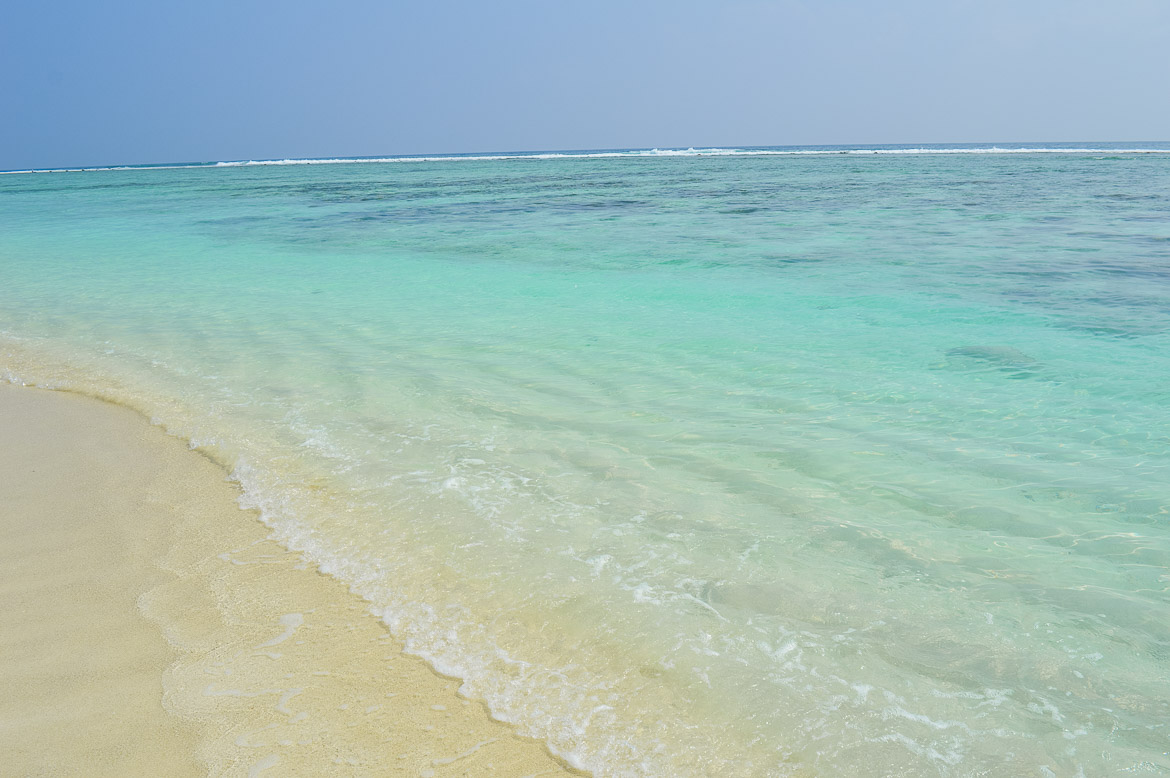
Maldives Travel Guide photos by Madeline Burch and provided by Seaside Grill and O’View.
Make your next trip the best one.
Departful is a full service travel agency creating truly exceptional travel experiences that are 100% personalized to you. Wherever you’re going, whatever your interests, we help you plan the perfect trip.
Madeline Burch
Madeline was born and raised in Toronto Canada, educated in marketing, and has worked in brand management and the alcohol industry for nearly a decade. In search of great drinks, stories and photos, she has travelled to South East Asia multiple times including a recent eight month stint based in Vietnam. From luxe travel to volunteer missions, she’s interested in it all.


